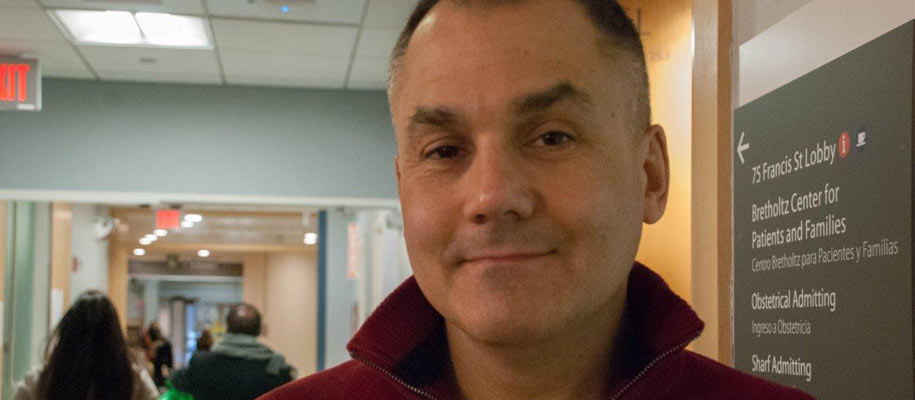
“There’s got to be a better way,” thought Richard Boyajian, RN, NP.
A nurse practitioner in the department of radiation oncology at Brigham and Women’s Hospital, Boyajian manages the monitoring visits required for men who have been treated for prostate cancer. The good news for these patients is the high success rates for men who receive treatment. But they must follow-up regularly with blood tests to check for early signs of recurrence and with physician visits to report any symptoms.
Boyajian observed that a lot of time in the follow-up process was spent on repetitive tasks for the physicians and staff. With more than 90 percent of prostate cancer patients surviving for at least 10 years after treatment, that adds up to a lot of visits for departments like his. The visits also required time and travel for the patients.
Boyajian wondered if technology could offer a solution. He envisioned software that could harness “telemedicine” to provide the necessary follow-up without the patient coming to the doctor’s office. He approached Brigham iHub, which helps staffers bring technology-based ideas to fruition.
The result is the “Virtual PSA Monitoring Program” (VPSAM). Through the program, patients can have blood drawn at a lab close to home. Results of the blood test, combined with an online survey that patients fill out at home, are fed into the software. This determines the patient’s symptom levels and whether their PSA is okay or if it is a cancer recurrence. Boyajian then follows up with a “virtual visit” by phone or video chat.
The software is showing early success, starting with the number of men opting to try it. “We were all a little shocked at the 90 percent enrollment rate during the pilot,” said Boyajian. “A lot of people are happy not to drive into Boston.”
“Patients love it,” he added. Of those who answered a survey after the virtual visit, 90 percent said that VPSAM reduced travel-related time, stress, and expense and that after their “virtual visit” they understood their plan for future care.
Boyajian led creation of the software, with input from a multidisciplinary team. From the start, physicians were supportive, he said. “They were very encouraging. They let me, a nurse practitioner, take the lead and run with it.”
The benefit for follow-up patients is that they can complete their ongoing monitoring close to home. And with Boyajian handling many follow-up patients via the software, physician time is freed up to treat more newly-diagnosed patients and others who have more acute needs.
For now, with the software in its early phase, Boyajian is the only one using it. After an upcoming round of software updates, he will also teach colleagues how to use the software.
Meanwhile, Boyajian has more improvements in mind. He envisions how VPSAM can be adapted for other conditions. “From a nursing perspective, I’m always thinking: How can I manage the patients better?”